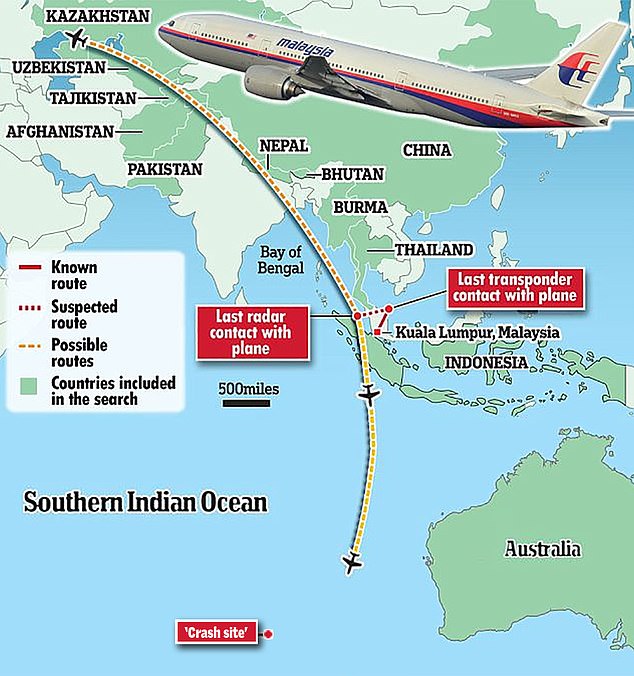A veteran Australian pilot insists he knows where Malaysia Airlines Flight MH370 crashed into the ocean 10 years ago, and his site is not far from where authorities searched for the missing plane.
Captain Byron Bailey, who has more than 50 years’ experience in the aviation industry, has closely studied the doomed flight, which disappeared on March 8, 2014, with 239 people on board, including six Australians.
Theories put forward by experts in the Sky News documentary MH370: 10 Years On suggest that the disappearance of the Boeing 777 was not a tragic accident, but rather a deliberate mass murder-suicide orchestrated by Captain Zaharie Ahmad Shah.
During the documentary, which aired on Tuesday night, presenter Peter Stefanovic asked Mr Bailey directly: “So where is the plane?”
His answer did not hesitate: in the Indian Ocean.
“I put it at 39 degrees, eight minutes south, and it’s only about 30 or 40 kilometers further south than where (they searched), and they wouldn’t go that far,” Bailey said.
Pictured is a map of where Malaysia Airlines flight MH370 may have flown and ended.
“That’s where the Australian government was planning to search and instead, when the search actually started, they went in the opposite direction.”
Bailey also criticized a major theory by the Australian Transport Safety Bureau (ATSB) about what happened to MH370.
While an initial search was carried out in the South China Sea, efforts shifted to the southern Indian Ocean when Australian authorities were asked to take over the mission.
The ATSB carried out an underwater search in the southern Indian Ocean from May 2014 until the operation was suspended in January 2017.
At that point, the ATSB arrived at its ghost flight theory, which suggests there was a catastrophic emergency with hypoxia that incapacitated everyone on board, including the pilot, and then the plane was left flying for hours before crashing.
Hypoxia occurs when the body does not receive enough oxygen, which can cause confusion and a rapid heart rate before the patient loses consciousness.
“Every pilot I know shakes their head at this made-up theory of a hypoxic event over the South China Sea, and the plane wandered around on its own for seven hours,” Mr. Bailey said.
‘Trash. You have to reprogram the computer.
He believes the murder-suicide theory, which holds that pilot Captain Shah performed a controlled glide of the plane once it ran out of fuel, is more likely.
Tony Abbott, who was Australia’s prime minister when the plane disappeared, said it became clear in about a week that the passengers and crew had been victims of a murder-suicide plot.
He told the program that he was clear that “someone had been in charge of that plane” and that the passenger plane’s disappearance was not an accident.
“Airplanes don’t do those kinds of things that those planes did, unless there’s someone at the controls,” he said.
Abbott said it soon became clear that the disappearance was the work of the Malaysian Airlines pilot.
“My very clear understanding from the highest level of the Malaysian government is that from very early on they thought this was a murder-suicide by the pilot,” he said.
“I’m not going to say who said what to whom, but let me reiterate – I want to be absolutely clear – it was understood at the highest levels that this was almost certainly a murder-suicide by the pilot, a mass murder-suicide by the pilot.’
In a mix of both leading theories, a retired Qantas pilot and a RAAF training captain told the documentary there were a number of ways someone inside the cockpit could have incapacitated the passengers.
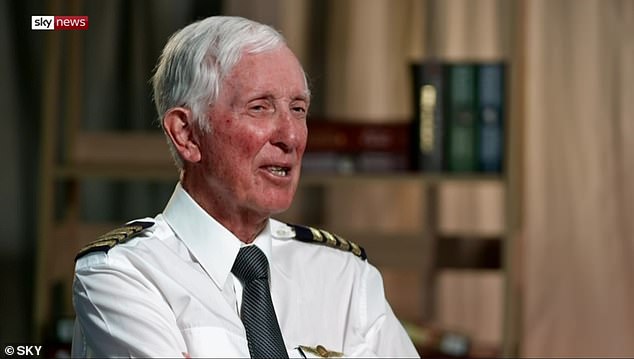
Captain Byron Bailey (pictured), who has more than 50 years of experience in the aviation industry, has closely studied the doomed flight, which disappeared on March 8, 2014 with 239 people on board, including six Australians .
Mike Glynn said there were several ways someone inside the cabin could have incapacitated the passengers.
He said someone inside the cabin could have easily closed the door and forced the plane into a state of confusion by depressurizing the cabin.
“(They) would make sure the door is locked, so no one can get in. Nothing anyone can do,” he said.
“When these outlet valves open, the plane depressurizes very quickly,” he said.
“If the plane is not going to descend, you will start to feel very hypoxic in three or four minutes.”
Glynn added that it would have been easy for someone inside the cabin to keep other people out, since locking doors were introduced after the 9/11 plane hijackings.
“The door will close automatically and you can lock it with this switch,” he said.
‘There is a manual lock that prohibits any type of entry into the flight deck. “You can have a full attack on the door, that’s not going to change anything.”
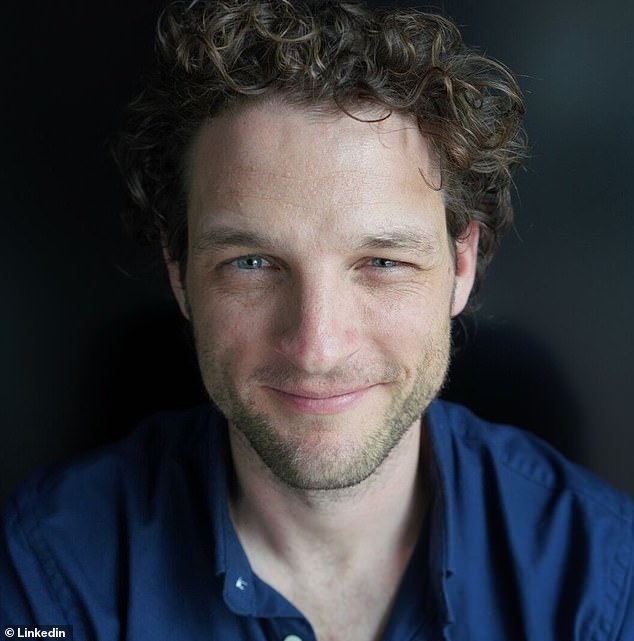
Peter Waring’s (pictured) experience studying the seabed led him to participate in the search for MH370.
A former Australian naval officer told the program he believed authorities were searching for MH370 in the wrong area a year after the plane disappeared.
Peter Waring was appointed deputy director of operations for the search in September 2014, but said he began to have “serious concerns” about how the investigation was being carried out in May 2015.
“At several points we made it look like we had a pretty good idea where it was, but that wasn’t the case,” he said.
“We had absolutely, more or less, almost nothing.
“Over time, the operation became wrapped in an armor of bureaucracy, so to speak, and that made it more difficult to change course.”
Waring, a former Navy lieutenant, said that despite evidence suggesting the plane could be in another area, the search operation was unable to change course.
“We had sort of chained ourselves to this particular area and weren’t flexible to look elsewhere when there was evidence to suggest that maybe it was somewhere else,” he said.
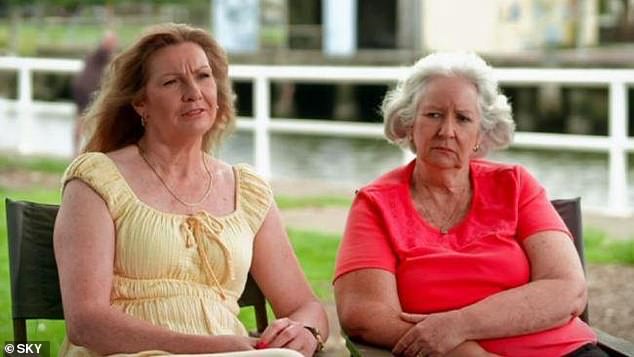
Sisters Jeanette Maguire and Eileen Docherty (pictured) had family on board MH370.
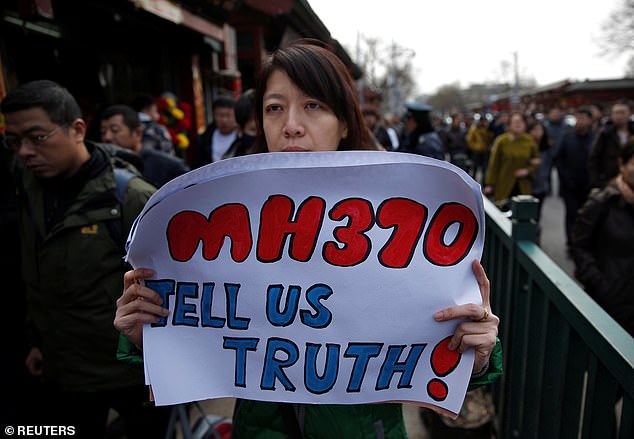
Catherine Gang, whose husband Li Zhi was on board Malaysia Airlines flight MH370, holds a banner saying the passengers’ families want the truth.
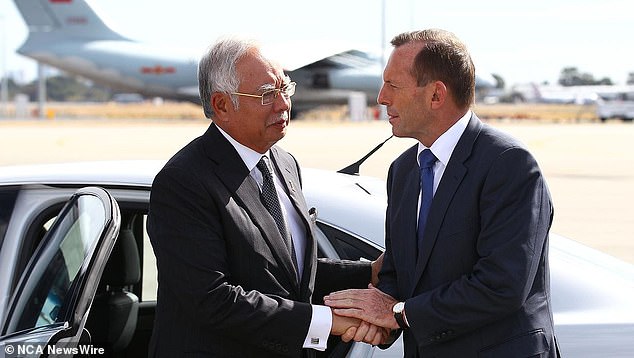
Then-Australian Prime Minister Tony Abbott (right) bids farewell to then-Malaysian Prime Minister Najib Razak after his visit to Perth during the search for missing Malaysia Airlines flight MH370 at Perth International Airport on April 3, 2014. .
He said that by mid-2015, enough seafloor had been covered to rule out the “leading assumption” that the plane had crashed in the Indian Ocean near an area known as the Seventh Arc.
“If that assumption had been correct, we would have found the plane at that point,” he said.
Nearly a decade later, the wreckage of MH370 has still not been found, even though its disappearance sparked the largest multinational air and sea search ever conducted.
The flight from Kuala Lumpur was destined for Beijing and carried passengers from 14 different countries.
40 minutes into what was supposed to be a routine flight, MH370 crossed from Malaysia into Vietnamese airspace.
It was at that moment that the passenger plane disappeared from civilian radars and the captain’s now infamous last words were heard.
‘Good evening, Malaysia 370.’
Jeanette Maguire’s sister and brother-in-law Cathy and Bob Lawton were two of the Australians on MH370 on its fateful final flight a decade ago.
He said the 10th anniversary of the plane’s disappearance was “big” as the mystery remains unsolved.
‘In some ways, it seems like yesterday. Every year is hard, but for me, 10 years, it’s realizing how long it takes to not have answers,” she said.
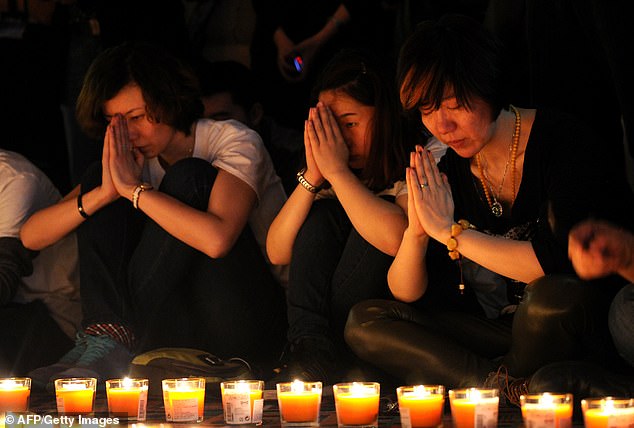
Chinese relatives of passengers from the missing Malaysia Airlines Flight MH370 participate in a prayer service at the Metro Park Hotel in Beijing, China, on 20
Eileen Docherty, another of Cathy Lawton’s sisters, said loss “never gets easier.”
But he believes the search was carried out in the best possible way.
‘I am satisfied that with the little evidence they had to go on, they did absolutely the best they could. Very grateful,’ she said.
Maguire said the family had received “very good support” during the “horrible experience”.
He said he can’t blame the pilot, despite many theories that he was at fault.
‘I still can’t blame someone unless I have that evidence. It’s just not in my DNA,” she said.
“Just by knowing what we’ve been through, his family will go through the same thing and, on top of that, they’ll have to live with the guilt.”


